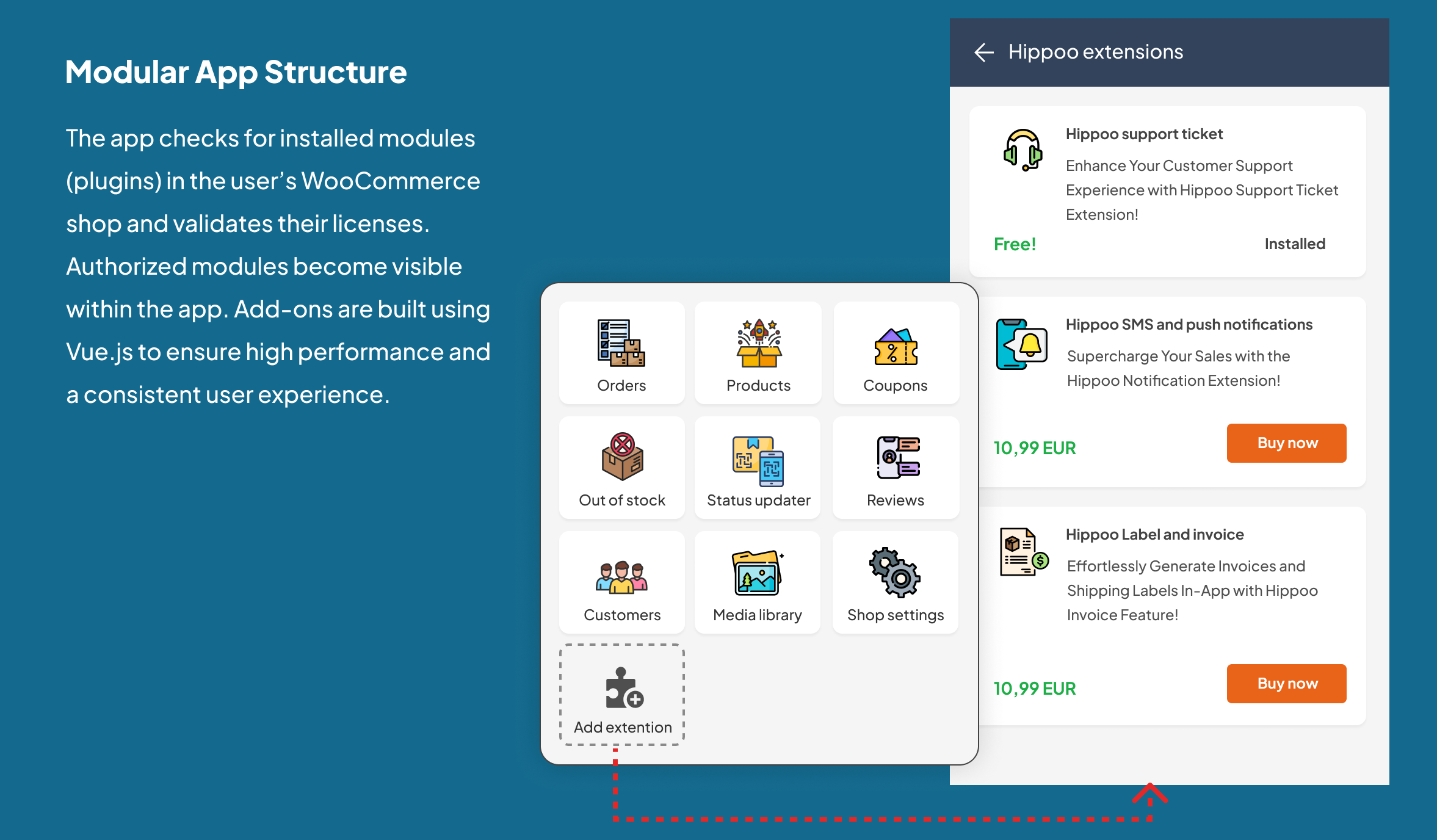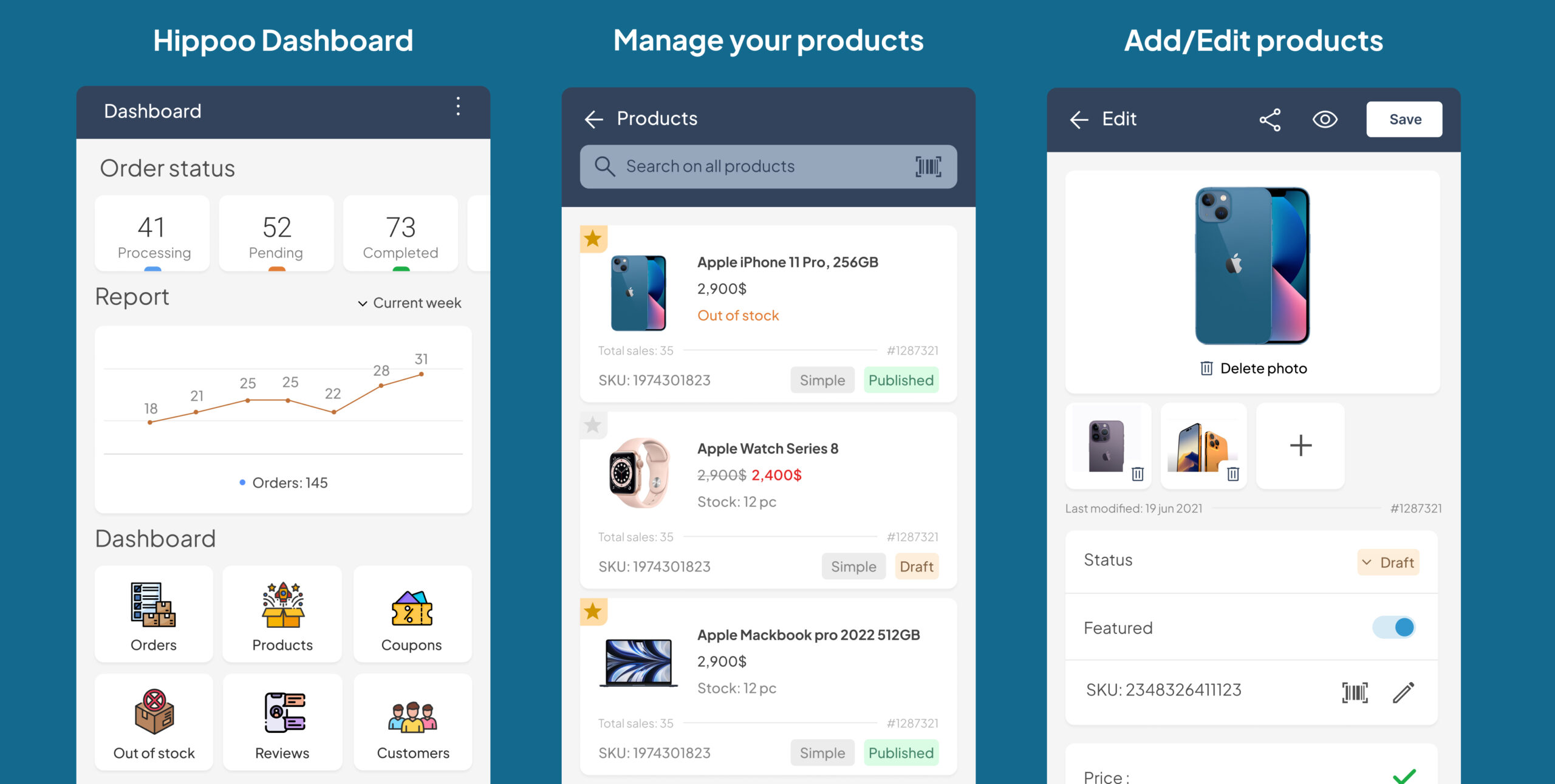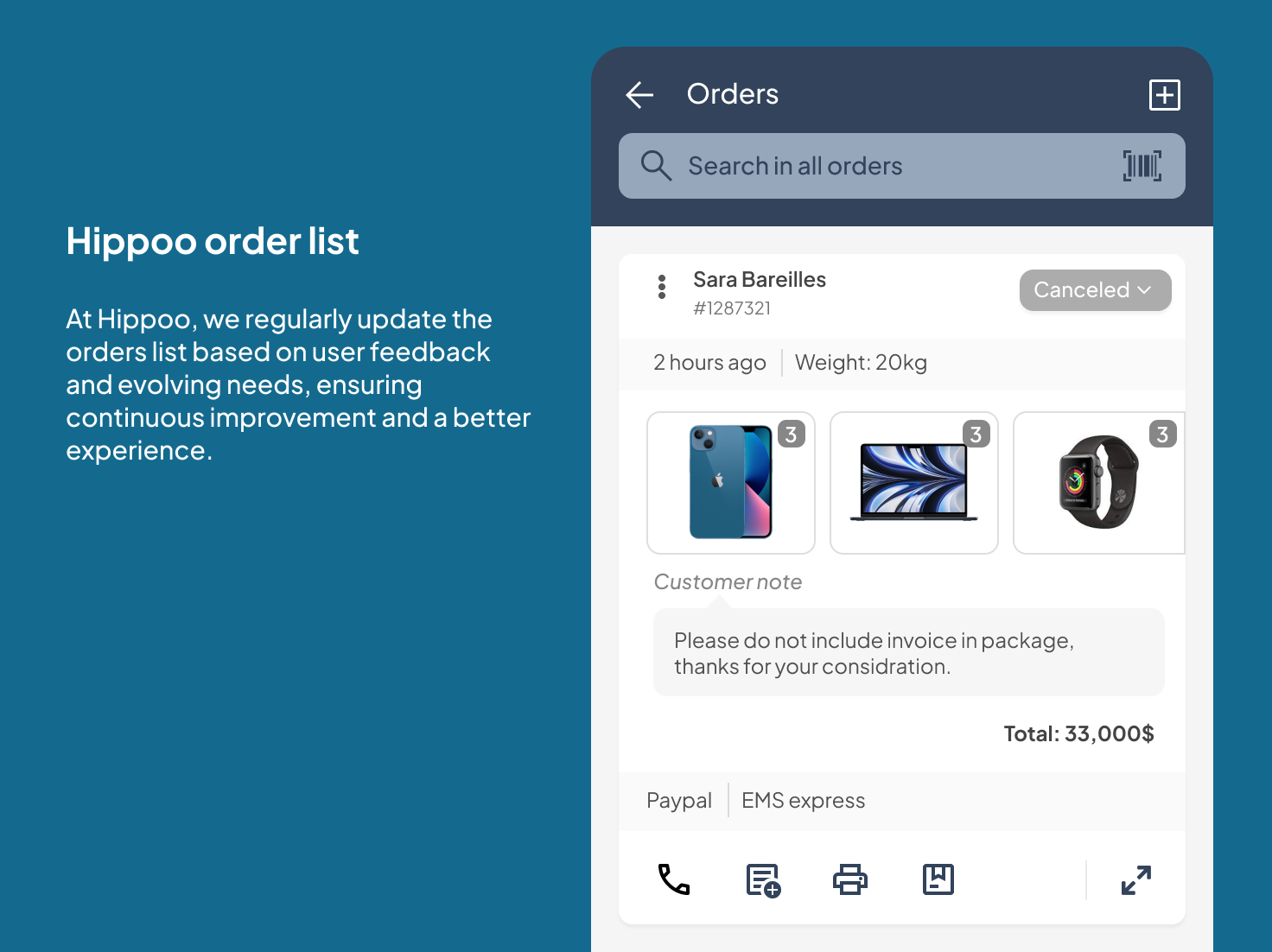Case Study: Building and Managing the Hippoo WooCommerce App
Note: This case study not only explores the design aspects but also provides an in-depth look at the team collaboration, technical structure, and strategic product management that led to its success.
Introduction
The Hippoo WooCommerce app was created to address the growing demands of modern e-commerce businesses. It combines advanced functionality, modular design, and user-centered development to deliver a seamless experience for WooCommerce users. This case study provides an in-depth look at how we conceptualized, designed, and implemented the app, detailing the strategic product management, team collaboration, and technical execution that led to its success.
Why Hippoo Was Needed
WooCommerce, as an open-source platform, lacks several essential features in its official app, making it difficult for businesses to scale effectively. Hippoo was designed to address these limitations by providing advanced tools to streamline operations, manage multilingual audiences, and enable modular functionality for efficient customization.
WooCommerce store owners faced challenges in managing multilingual audiences, scaling stores, and optimizing workflows. External tools often lacked integration, and modular functionality was limited. Hippoo addresses these issues with advanced features tailored for modern e-commerce.
Building the Team
The development of the Hippoo WooCommerce app required a multidisciplinary team working in harmony. As the product manager and lead designer, I oversaw a talented team consisting of:
- iOS Developer: Focused on building a user-friendly and robust app for Apple devices.
- Android Developer: Ensured Unified functionality and performance on Android platforms.
- Front-End Developer: Specialized in crafting a visually engaging and responsive user interface.
- Back-End Developer: Designed and implemented a scalable, secure architecture to handle complex operations.
Using tools like Trello for task management, Figma for design iterations, and Firebase for analytics, the team collaborated closely to deliver an integrated and high-performing app. Regular brainstorming sessions and feedback loops ensured alignment and rapid problem-solving.
Technical Implementation
The technical foundation of the Hippoo WooCommerce app was designed to support scalability, efficiency, and adaptability. Key aspects include:
- WooCommerce Hippoo Plugin: Built to authenticate users and enhance app functionality.
- REST API Integration: Utilized WooCommerce version 3 REST API for seamless synchronization, with comprehensive documentation provided.
- Custom WordPress Plugins: Developed four dedicated plugins to extend the app’s functionality, fully integrated into the app ecosystem.
- Modular App Structure: The app checks for installed modules (plugins) in the user’s WooCommerce shop and validates their licenses. Authorized modules become visible within the app. Add-ons are built using Vue.js to ensure high performance and a consistent user experience.
- Firebase Integration: Used to track key metrics such as uninstall rates, time on app, and engagement, enabling data-driven decision-making.
Modular app Design Approach
The modular design of the Hippoo WooCommerce app was integral to its flexibility and scalability. This approach allows users to customize and expand the app’s functionality as their needs evolve. Here’s how it works:
- Module Detection: The app first checks the user’s WooCommerce shop to determine if specific modules (plugins) are installed and activated.
- License Validation: Once a module is detected, the app validates the license to ensure it is authorized and compliant.
- Dynamic Activation: Upon successful validation, the module becomes visible and accessible within the app.
- Vue.js Add-Ons: All modules and add-ons are developed using Vue.js, which ensures high performance and a seamless user experience.

User-Centered Design Approach
Our design approach emphasized adaptability and simplicity. We ensured usability across devices, supported multilingual features to cater to a global audience, and provided customizable options for users to tailor the app to their needs. To gather actionable feedback, we:
- Used a dedicated feature request portal at https://hippoo.canny.io/feature-request.
- Conducted user interviews and analyzed insights from the WordPress plugin page, Google Play Store, and Apple App Store.
- Iteratively improved the app based on user needs and pain points.
Achievements and Growth
Since its launch, the Hippoo WooCommerce app has achieved significant milestones:
- Over 5,000 installed users, ranging from small businesses to enterprise-level clients.
- An average customer satisfaction score of 4.8/5, reflecting its usability and performance in Google Play Store.
- A thriving community of users who actively contribute feedback and feature suggestions, driving continuous improvement.
Impact and Lessons Learned
The Hippoo WooCommerce app has significantly transformed businesses by streamlining operations, enhancing customer experiences, and driving revenue growth. A key takeaway from our journey was the importance of early engagement. By involving users in the process through beta testing, we were able to gather valuable feedback that refined and improved our product.
Another crucial aspect was iterative development. Regular updates ensured the app evolved alongside user needs, maintaining its relevance and effectiveness. Additionally, fostering a collaborative environment, with clear communication and teamwork at its core, played a vital role in achieving our success.
Conclusion
The Hippoo WooCommerce app exemplifies the fusion of thoughtful design, robust technical implementation, and strategic product management. It is more than a tool; it is a comprehensive solution tailored to WooCommerce users’ needs. For more details about Hippoo and its transformative capabilities, visit Hippoo.app.







